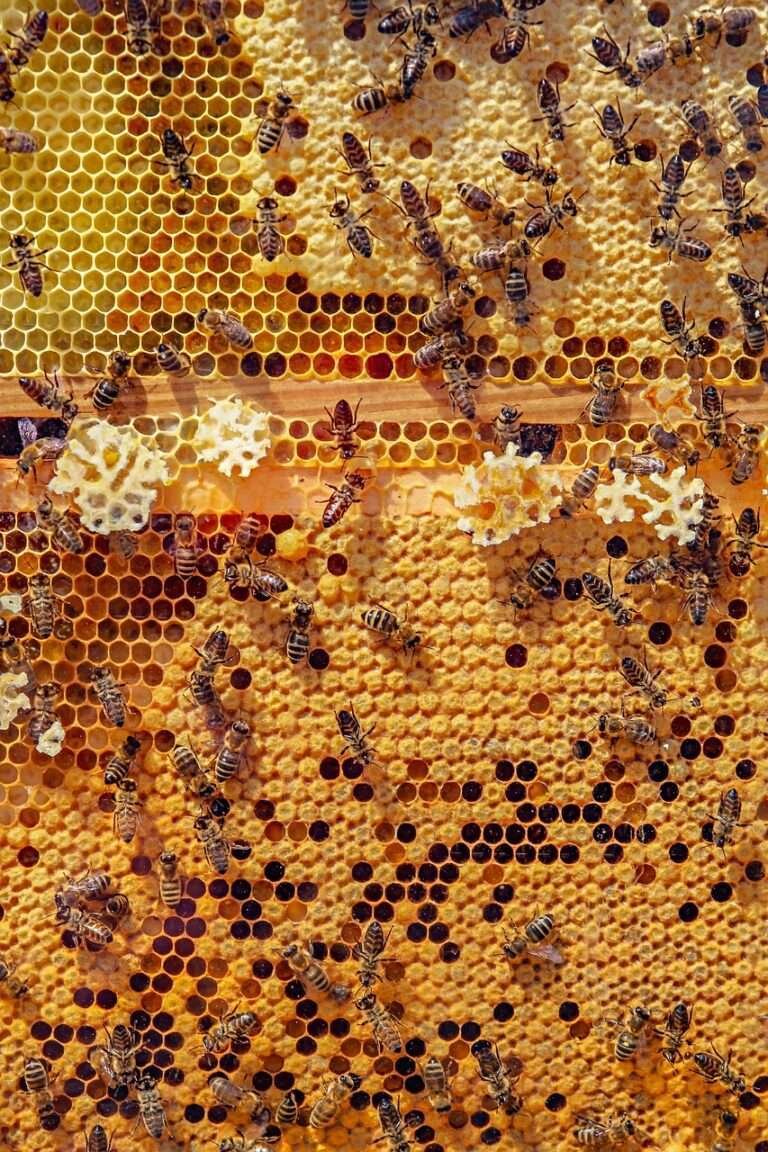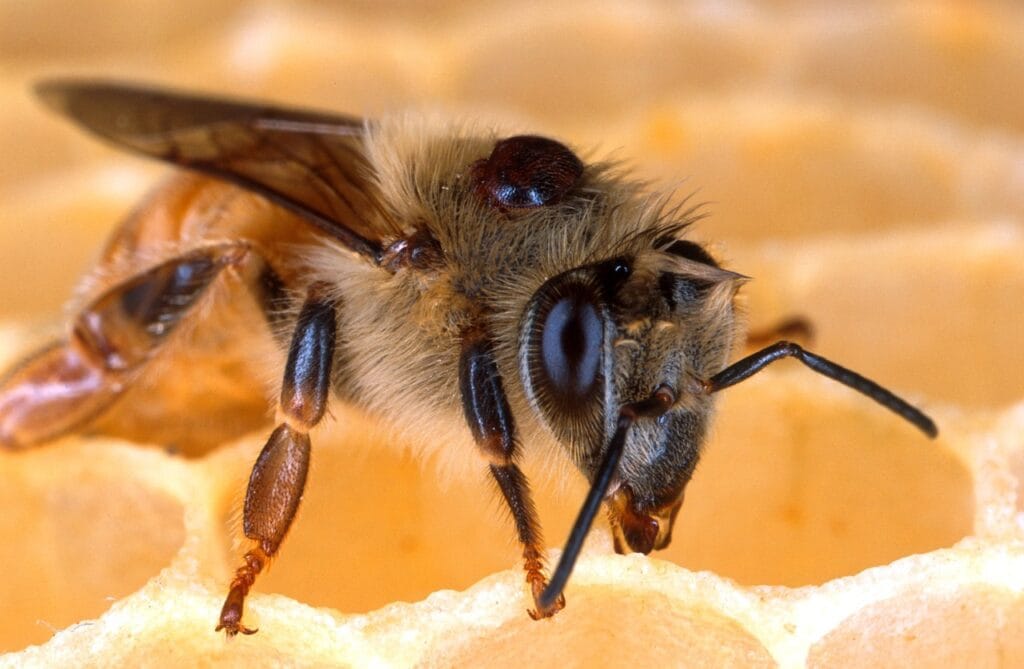Advanced beekeeping encompasses a sophisticated range of practices that extend far beyond basic hive management.
These techniques represent the cutting edge of apiculture, combining traditional knowledge with modern scientific methods to optimize colony health, productivity, and sustainability.
We’ll take a deep look into each of these subject in the near future, but for now here’s a comprehensive overview of advanced beekeeping techniques.
Queen Rearing and Breeding Techniques
Advanced Queen Rearing Methods
Grafting Techniques form the foundation of professional queen production. The process involves transferring larvae under 24 hours old from worker cells into artificial queen cups, allowing beekeepers to control timing and genetics precisely. The Miller Method and Doolittle Method represent time-tested approaches, while the Jenter system offers modern alternatives for precise larval selection.[1][2][3]
Instrumental Insemination provides unprecedented control over bee genetics. This advanced technique allows beekeepers to inseminate virgin queens with selected drone semen, enabling precise breeding programs and genetic improvements. Research shows that properly executed instrumental insemination can achieve genetic gains up to 42% higher than traditional isolated mating stations, particularly when combined with shortened paternal generation intervals.[4][5]
Genetic Selection Programs focus on developing superior bee strains through systematic breeding. Advanced beekeepers engage in selective breeding for traits including disease resistance, honey production efficiency, gentle temperament, and Varroa tolerance. Modern genomic selection techniques are revolutionizing this field, allowing breeders to identify superior genetics earlier and with greater accuracy.[6][1]
Integrated Pest Management (IPM) Strategies
Varroa Mite Management
Cultural Controls form the foundation of effective Varroa management. Brood interruption techniques, including queen caging and trapping comb methods, significantly reduce mite reproduction cycles. These methods can be combined with chemical treatments for enhanced effectiveness.[7][8][9]
Biological Controls leverage natural bee behaviors and beneficial organisms. Some beekeepers successfully employ drone brood removal, taking advantage of Varroa’s preference for drone cells. Cell size management represents another cultural approach, with some practitioners using smaller cell sizes (4.9mm versus standard 5.4mm) to potentially disrupt Varroa reproduction cycles.[10][1]
Treatment Rotation prevents resistance development by alternating between different classes of miticides. The IPM pyramid approach starts with monitoring and prevention, escalates through mechanical and cultural controls, incorporates organic acids, and reserves synthetic chemicals as last resort options.[8][7]
Cell Size Management and Natural Beekeeping
Foundation and Cell Size Considerations
Small Cell Beekeeping involves using foundation with cell sizes of 4.9mm or smaller, compared to the standard 5.4mm commonly used. Proponents argue this approach reduces Varroa mite infestations by shortening brood development time and making cells less attractive to mites. However, the scientific evidence remains mixed, with some studies showing benefits while others find minimal differences.[11][10]
Foundationless Beekeeping allows bees to build natural comb without artificial foundation. This approach offers several advantages: elimination of potential contaminants in wax foundation, natural cell size determination by bees, and easier comb cycling for parasite management. Advanced practitioners combine this with crush-and-strain honey harvesting methods.[12]
Technology-Enhanced Beekeeping
Hive Monitoring Systems
Advanced Sensor Technology enables remote hive monitoring on unprecedented scales. Modern systems incorporate multiple sensors measuring weight, temperature, humidity, acoustic signatures, and even individual bee counting. Companies like BeeHero and HiveGenie offer comprehensive monitoring platforms that use machine learning to predict colony issues and optimize management decisions.[13][14][15]
Data-Driven Management transforms traditional beekeeping intuition into precise, measurable practices. Continuous monitoring allows beekeepers to detect swarming preparation, disease onset, and productivity changes in real-time. Some systems can monitor millions of hives simultaneously, providing insights impossible through manual inspection alone.[15]
Commercial-Scale Advanced Techniques
Migratory Beekeeping Operations
Pollination Services represent a sophisticated form of commercial beekeeping requiring precise timing and logistics. Advanced migratory operations move thousands of hives across vast distances, following blooming cycles to maximize both pollination income and honey production. Professional operations employ specialized trucks, GPS tracking, and sophisticated scheduling to manage these complex movements.[16][17][18][19]
Route Optimization involves calculating optimal migration patterns considering fuel costs, travel distances, crop timing, and bee stress minimization. Modern migratory beekeepers use advanced logistics software to plan efficient routes that maximize profitability while maintaining colony health.[19]
Multi-Hive System Management
Queen Banking techniques allow beekeepers to maintain reserves of mated queens for emergency requeening or expansion. Advanced practitioners maintain specialized queen-rearing operations that can produce hundreds of quality queens annually using coordinated breeding programs.[1]
Colony Multiplication Systems enable rapid expansion through sophisticated splitting and nucleus colony techniques. The double-screen method and push-in cage introductions represent advanced approaches for managing queen introduction and colony development.[20]
Alternative Hive Systems
Top Bar Hive Management
Horizontal Hive Systems offer unique advantages for certain applications. Top bar hives require different management approaches, with emphasis on comb quality control and horizontal expansion rather than vertical super addition. Advanced practitioners use specialized tools and techniques for comb manipulation and harvest.[21][22][23]
Natural Management Approaches in top bar systems often emphasize minimal intervention and treatment-free methods. However, successful top bar beekeeping requires frequent monitoring and skilled comb management to prevent cross-combing and maintain colony organization.[24][25]
Swarm Management and Capture
Advanced Swarm Trapping
Strategic Swarm Trap Placement involves understanding swarm behavior and optimal trap characteristics. Research indicates that traps should be approximately 40-45 liters in volume, positioned 10-15 feet high, with south-facing entrances and small entrance holes (1-2 square inches).[26][27][28]
Lure and Bait Systems enhance trap effectiveness through chemical attractants and old brood comb. Lemongrass oil and commercial swarm lures significantly improve capture rates, while positioning multiple traps of varying sizes can capture both primary swarms and afterswarms.[27][28]
Specialized Breeding and Conservation
Genetic Conservation Programs
Cryopreservation Techniques enable long-term storage of valuable genetic material through semen banking and queen preservation. These methods support conservation efforts and allow reconstruction of valuable bee lines years after their original collection.[5]
Population Genetics Management involves maintaining genetic diversity while improving desired traits. Advanced breeding programs use sophisticated statistical methods to balance genetic gain with diversity preservation, preventing inbreeding depression while achieving breeding objectives.[4]
In Summary
Advanced beekeeping represents the intersection of traditional knowledge, scientific research, and modern technology.
These techniques require substantial expertise, specialized equipment, and ongoing education, but offer the potential for significantly improved colony health, productivity, and sustainability.
Success in advanced beekeeping depends on understanding both the biological principles underlying these methods and the practical skills required for their implementation.
⁂
- https://www.linkedin.com/pulse/advanced-beekeeping-methods-topweld-general-engineering-bktpc
- https://www.youtube.com/watch?v=C5CiPCde87w
- https://agriculture.vic.gov.au/livestock-and-animals/honey-bees/handling-and-management/raising-queen-honey-bees
- https://pmc.ncbi.nlm.nih.gov/articles/PMC10531475/
- https://www.youtube.com/watch?v=2eN2Ndw8qf0
- https://www.frontiersin.org/journals/genetics/articles/10.3389/fgene.2020.578123/full
- https://www.ento.vt.edu/the-bee-group-at-vt/beekeeping/mites.html
- https://honeybee.org.au/wp-content/uploads/2024/05/AGF575-IPM-S1V2-corrected.pdf
- https://pmc.ncbi.nlm.nih.gov/articles/PMC10889759/
- https://english.resistantbees.es/?p=108
- https://www.bushfarms.com/beesnaturalcell.htm
- https://beebuilt.com/pages/natural-beekeeping
- https://www.forsage.net/en/sensors/
- https://www.hivegenie.com
- https://www.beehero.io/technology
- https://theholyhabibee.com/migration-of-bees/
- https://www.smileyhoney.com/blogs/honey-school/migratory-beekeeping
- https://beekeepclub.com/migratory-beekeeping/
- https://academic.oup.com/jee/advance-article/doi/10.1093/jee/toaf119/8169156
- https://www.extension.purdue.edu/extmedia/4h/4-h-593-w.pdf
- https://beebuilt.com/blogs/backyard-beekeeping-blog/how-to-start-a-top-bar-hive
- https://beebuilt.com/pages/top-bar-hive-management
- https://www.youtube.com/watch?v=kdkykdH0cLc
- https://beeculture.com/experiences-top-bar-hive/
- https://www.beesource.com/threads/traditional-top-bar-hives-david-tromp.365809/
- https://beeculture.com/swarm-catching/
- https://www.reddit.com/r/Beekeeping/comments/17bmg3q/swarm_traps_are_they_worth_it_how_to_maximize/
- https://www.betterbee.com/instructions-and-resources/swarm-traps.asp



